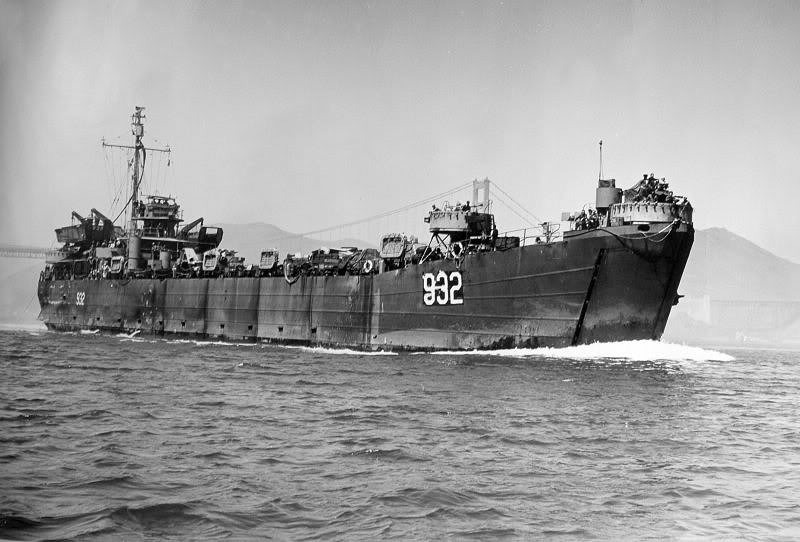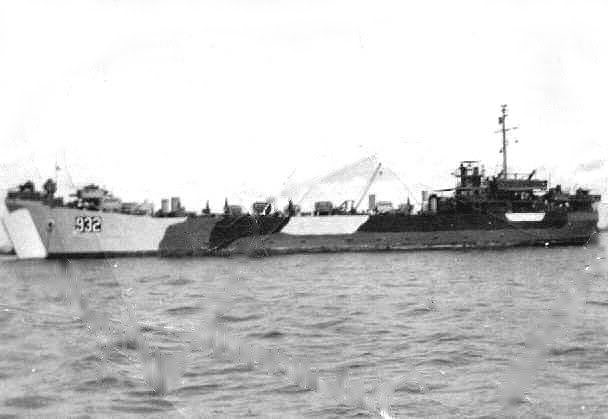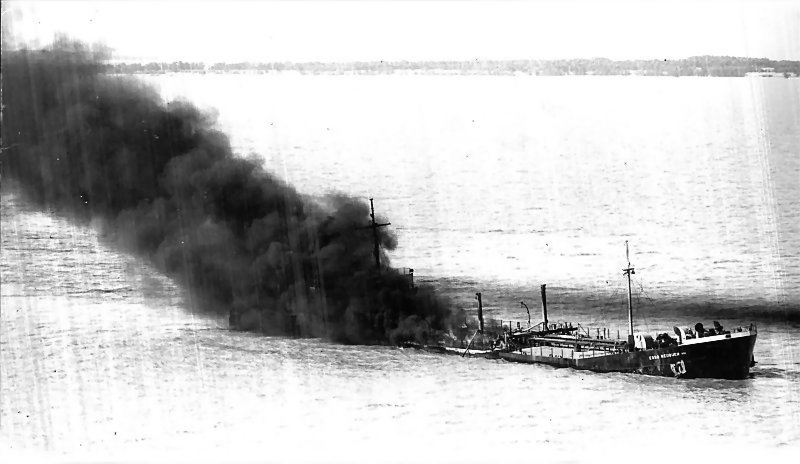Auke Visser's Other Esso Related Tankers Site | home
Esso Neuquen - (1949-1952)
"Esso Neuqeun", was build during WWII as a LST-932, craft, as ssen here, for the US Navy.
Rebuild as a tankbarge and renamed "Esso Neuqeun", sold in 1952.
"LST-932".
"Esso Neuqeun", ex. "LST-932".
A thick column of smoke rises is hiding a part of "ESSO NEUQUÉN", the Argentine tanker is considered lost as
a result of the explosion and fire on board, north of Martin Garcia Island .
The Miramar Ship Index for "LST-932"
IDNo:
|
6119359
|
Year:
|
1944
|
Name:
|
LST-932
|
Keel:
|
21.06.1944
|
Type:
|
Landing craft
|
Launch Date:
|
22.07.1944
|
Flag:
|
USA
|
Date of completion:
|
15.08.1944
|
Tons:
|
1653
|
Link:
|
-
|
DWT:
|
4080
|
Yard No:
|
3402
|
Length overall:
|
100.0
|
Ship Design:
|
|
LPP:
|
96.3
|
Country of build:
|
USA
|
Beam:
|
15.2
|
Builder:
|
Bethlehem-Hingham SY
|
Material of build:
|
Location of yard:
|
Hingham
|
|
Number of screws/Mchy/Speed(kn):
|
2D-11.5
|
||
Subsequent History:
[ 1949 converted to tanker, 3380 grt ] -
1949 ESSO NEUQUEN
Disposal Data:
Fire & sank 34.21.40 S / 58.00.40 W on 21.02.1952
[ Voyage Buenos Aires-Campana, fuel oil ] & later scrapped.
History :
ON
|
LR/IMO
|
ID
|
Year
|
Name
|
Tons
|
Change
|
Registered Owner
|
6119359
|
1944
|
LST-932
|
1653
|
U.S.Navy
|
|||
6119359
|
1944
|
ESSO NEUQUEN
|
3380
|
1949
|
Esso Argentina
|
542-Class Tank Landing Ship
Laid down, 21 June 1944, at Bethlehem-Hingham Shipyard, Inc., Hingham, MA. Launched, 22 July 1944
Commissioned USS LST-932, 14 August 1944, LT. W. F. Jerome, USNR, in command During
World War II LST-932 was assigned to the Asiatic-Pacific Theater and participated in the:
Luzon operation, Lingayen Gulf landing in January 1945 & Mindanao Island landings in April and May 1945
Following World War II LST-932 performed occupation duty in the Far East including service in China until mid- February
1946 Decommissioned, 24 June 1946
Struck from the Naval Register, 31 July 1946
Sold, 29 March 1948, to Standard Oil Co. for operation
1949 renamed Esso Neuquen.
Final Disposition sold for scrap after fire in 1952.
Specifications:
(as reported by Office of Naval Intelligence-1945)
Displacement 1,625 t.(lt), 4,080 t.(fl) (sea-going draft w/1675 ton load)
Length 328' o.a.
Beam 50'
Draft: (light) - 2' 4" fwd, 7' 6" aft (sea-going) 8' 3" fwd, 14' 1" aft (landing) 3' 11" fwd, 9' 10" aft (landing w/500 ton load)
Speed 12 kts. (maximum)
Endurance 24,000 miles @ 9kts. while displacing 3960 tons
Complement 7 officers, 104 enlisted
Troop Accommodations 16 officers, 147 enlisted
Boats 2 LCVP
Cargo Capacity (varied with mission - payloads between 1600 and 1900 tons)
Typical loads
One Landing Craft Tank (LCT), tanks, wheeled and tracked vehicles, artillery, construction equipment and military supplies.
A ramp or elevator forward allowed vehicles access to tank deck from main deck
Additional capacity included sectional pontoons carried on each side of vessel amidships, to either build Rhino Barges or use as
causeways. Married to the bow ramp, the causeways would enabled payloads to be delivered ashore from deeper water or where a
beachhead would not allow the vessel to be grounded forward after ballasting
Armament (varied with availability when each vessel was outfitted. Retro-fitting was accomplished throughout WWII.
The ultimate armament design for United States vessels was
2 - Twin 40MM gun mounts w/Mk. 51 directors
4 - Single 40MM gun mounts
12 single 20MM gun mounts
View the LST-932 DANFS history entry located at the US Naval Historical Center


